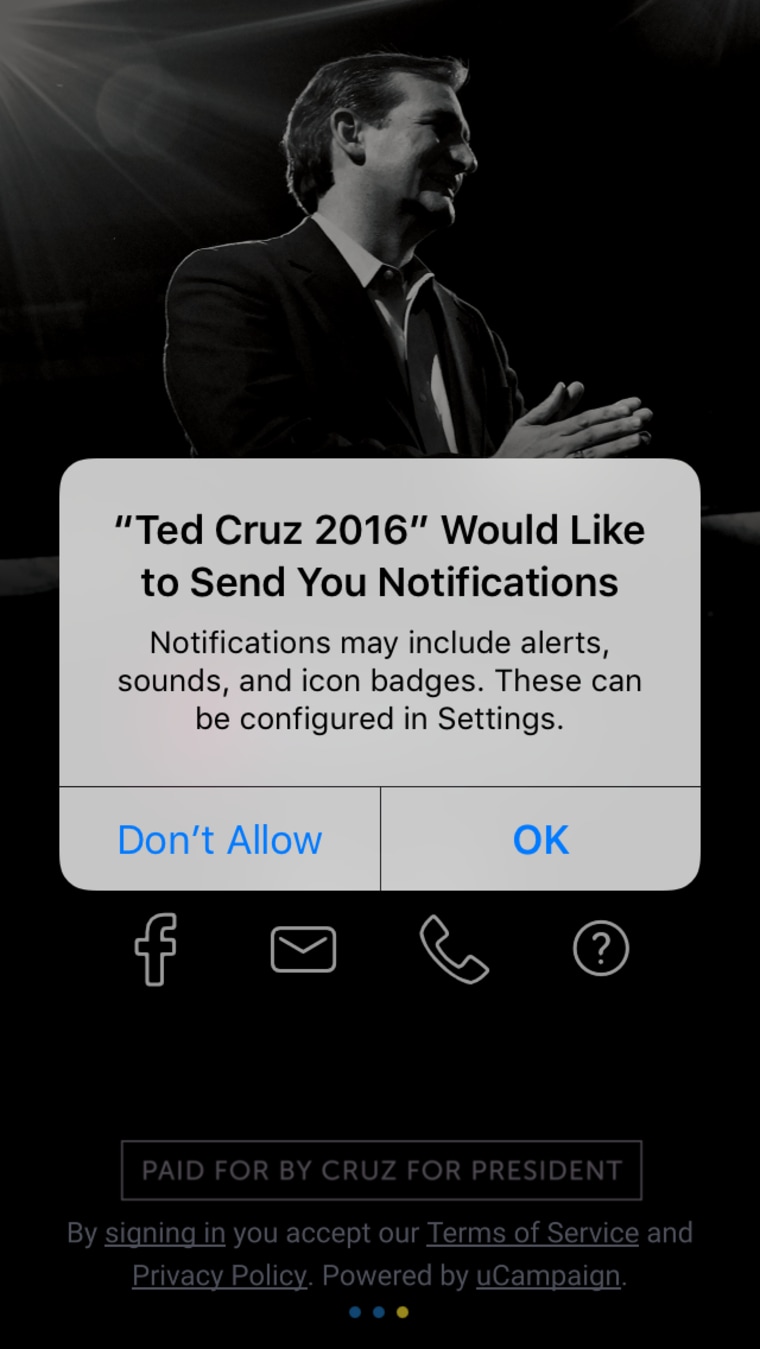Silicon Valley and Washington are in a strained relationship.
Apple is resisting the FBI's request for help in unlocking an iPhone as part of a terror investigation. Google is lobbying Congress to prioritize self-driving cars. Techies, as a rule, continue to complain of burdensome taxes and regulations.
Despite the tensions, software and politics have never been more closely intertwined — a reality that's becoming increasingly apparent in the presidential primaries and as the general election nears.

The same technologies that power corporate marketing departments are helping candidates target potential supporters, fundraise, and energize volunteers to "get out the vote." High-powered databases and analytics tools give campaigns real-time feedback on how their candidate's message is resonating, whether in a debate, a town hall or at a rally.
That's to say nothing of their obsessive use of Facebook and Twitter.
"Both parties are just a lot more sophisticated in how they think about engaging with voters," said Alex Bard, CEO of email marketing provider Campaign Monitor in San Francisco. "Campaigns are starting to operate much more like sophisticated SMBs (small- and medium-sized businesses)."
Bard said that political campaigns using his company's technology now send out nine to 10 targeted emails a day, up from one or two in February. Between 30 percent and 40 percent of those messages are opened, compared with the industry average of 20 percent, he said.
This isn't at all surprising. President Barack Obama's 2012 campaign was lauded for its efficient use of open-source technology, cloud hosting and data analytics tools to outflank Republican challenger Mitt Romney.
Those tactics are now more widespread, and the technology has evolved. Smartphone ownership in the United States has grown 70 percent from four years ago, and prominent data-processing technologies, like Hadoop, for real-time decision-making, were in their early days in 2012.
AdRoll, a developer of so-called retargeting software, does big business in election season and is starting to see its technology used in down-ticket races for Congress and even at the state level. While the San Francisco-based company won't name its political clients, third-party software makes it easy to uncover.
Head to the website of Vermont Sen. Bernie Sanders, and a digital tracking tool from Ghostery shows that code from AdRoll is embedded in the Democratic candidate's site. AdRoll and competitive services from Criteo and Rakuten (used on Sen. Ted Cruz's, R-Texas, website), let customers take notice of who's visiting their site and what they do when they arrive, enabling campaigns to build user profiles.
For people simultaneously logged onto Facebook or Twitter, the sites know who they are and target them with ads on those sites and across the Web.
"With candidates, you see all sorts of creative approaches," said Aaron Bell, founder and CEO of AdRoll. "You can have a campaign targeting people who visited their home page, previous volunteers, or someone who bought swag on those sites, like T-shirts, bumper stickers and coffee mugs."
Running behind the scenes at AdRoll to help understand and predict consumer behavior is high-speed data-processing technology from Amazon Web Services and open-source analytics software called Presto, built by developers at Facebook.
Scrolling through the various candidate websites is like taking a tour through a venture capital portfolio. According to Ghostery, other services used by Sanders include ad-tech software for placing digital ads from AppNexus, Rubicon Project and Quantcast. Hillary Clinton uses Advertising.com for online ads and Optimizely for testing and analytics, while Sanders and Clinton both utilize Shopify on their e-commerce sites.
It's all about awareness and fundraising.
"There's a lot of science around raising money," said former Salesforce.com CEO John Dillon, who now runs Aerospike, the developer of a high-performance database. "Both parties have this in spades right now."
They also have to deal with dramatic and rapid increases in traffic. For analytics, Sanders uses Mixpanel, while Cruz turns to New Relic to monitor the performance of his website and enable quick response to outages or slow load times.
When it comes to targeting, Cruz's mobile app is pushing the boundaries. Designed by Thomas Peters, who calls himself a center-right Republican, the Ted Cruz 2016 app is a data feast.
Peters' Washington, D.C.-based start-up uCampaign was handed a massive file of voting prospects from the Cruz campaign. The app cross-references the master list with the contacts on an individual's phone. When a supporter downloads the app and gives permission to access the contact list, the app can spit out a few highly relevant potential supporters to invite.

"They don't get a list of 5,000 people; they get a list of three people to call," said Peters, who opted to get more involved in Republican politics after Romney's failed 2012 campaign. "It's the intersection of big data with personal data that results in a much more efficient use of grassroots energy."
For a completely contrasting style, there's Republican front-runner Donald Trump. He doesn't have a mobile app. And an autopsy of Trump's website shows that, aside from very basic Google and Facebook tools, there's no tracking technology running under the surface. Trump has energized his voters via his almost 7 million Twitter followers (Cruz and Ohio Gov. John Kasich have less than 1 million) and a slightly lesser number of Facebook fans.
Where this strategy will be greatly tested is in the general election, should Trump win the nomination.
Dheeraj Pandey, CEO of cloud data center and storage vendor Nutanix, said that Trump has a strong front office in generating leads and excitement through social media and rallies, but his limited data collection and resource planning could create a problem.
Winning against the analytics-driven machine the Democrats have put together will require finding exactly where the most important swing-state independents are and sending them targeted, timely messages.
"It's about getting everyone to come and vote on election day, and there big data is really important," said Pandey. "If your back office is weak, all this chest-thumping goes nowhere."
